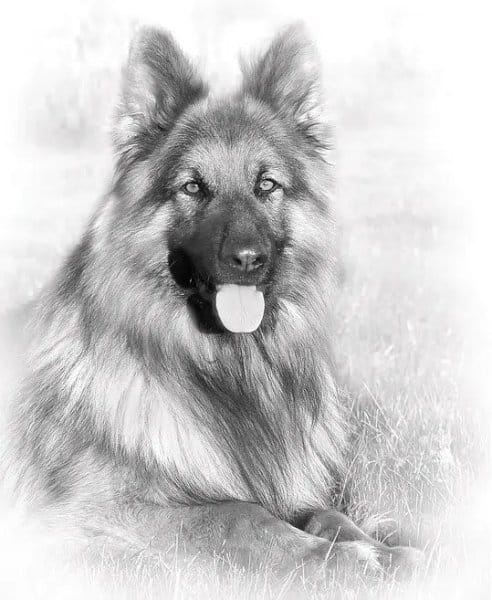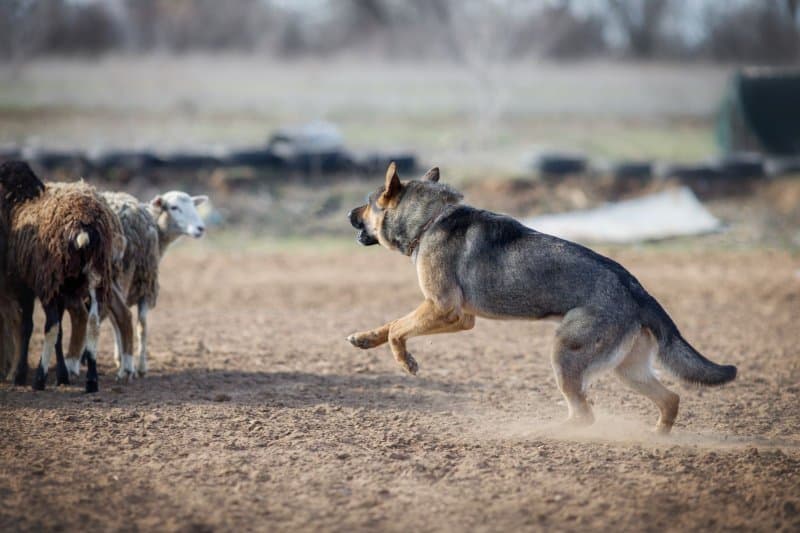Form Follows Function: Part One of a Series
Introduction
I have found that the more I study other breeds, the better I understand my own breed. My lifelong journey began in 1969 with the purchase of my first “show” dog, a German Shepherd Dog. I foundered for years trying to relate how my dog resembled his Standard, without the benefit of mentors with any real depth of knowledge on the breed. I started attending the German Shepherd Club of America’s national specialty each year where I had the great fortune to be befriended by Patricia Parsons and Scootie Sherlock of Caralon German Shepherd/Pembroke Welsh Corgi fame.
They introduced me to Dr. Charles Kruger of Schaferhaus (also founded in German Shepherds and then deeply involved with the Pembroke Welsh Corgi) and my canine education began. Sitting ringside between these three people throughout all of the huge classes as they discussed in depth the attributes and faults of the dogs standing and moving before us in the ring gave me a foundation from which to begin my studies.

At that time, there were very few publications devoted to the study of the canine and I quickly learned that reading something and thinking that you understand it and then watching it with someone there to explain exactly what I was seeing, were two vastly different experiences.
With help from my mentors and attending any and all seminars on the dog, no matter what the breed, it all began to make sense to me. That is why I have devoted so much time, effort and energy into writing articles and producing DVDs on the canine in order to pass on what I have learned. I am not an authority on canine anatomy. I cannot name all of the muscles that cause the skeletal structure to move.
What I hope to accomplish with this series is to get each of you thinking about your breed and what really makes it unique. This series on form and function and will emphasize skeletal structure and movement and balance in the dog. Before we get into how form follows function, I do want to stress if you have a dog without its essential breed characteristics, then it matters little how that dog moves!
We, who breed and show our dogs, are the “Keepers of the Standards.” It is our responsibility to know the Standard for our breed, and the whys and wherefores of its history, development, purpose and function. In this day and age, it is rare for a dog to routinely perform the duties for which it was developed, but if we do not preserve their ability to do so, then why have individual breeds at all?
AKC has many outlets in which to prove a dog’s working ability, if one has the inclination and time to do so. Entering your dog in an instinct test for your breed can be eye-opening. I will never forget the electricity that went through my dog the first time he saw livestock! In a discussion with a Norwegian friend who is both a herding trial and conformation judge, she quoted a Scottish Border Collie breeder, who said to her, “In my country, we have dogs because we have sheep. In the USA, they have sheep because they have dogs.”
A statement that says a lot about those who are willing to prove and preserve our chosen breeds’ original purpose. Even so, working ability means nothing if the dog does not look like its breed. Type is of primary importance. Movement is an integral part of type. They cannot be separated. Architect Frank Lloyd Wright is credited with the statement, “Form follows function has been misunderstood. Form and function should be one, joined in spiritual union.” This statement definitely relates to the fact that type encompasses the whole dog and each dog should move as his purpose dictates.
From the Great Dane to the Chihuahua, each breed should look, act and move a certain way. The dog’s function can be anything from cattle control to serving as a companion and pleasing the eye of the owner. It cannot be emphasized enough that you show know your Standard. You should know the history and original purpose of your breed. Understanding the uniqueness of a breed explains why so many breeders passionate about a breed have devoted their time over many years (often many hundreds of years), to develop and preserve it.
Two of the most commonly heard terms used when discussing the make and movement of the canine are “form follows function” and ‘balance.” Since this is to be a series concerning the structure and movement of the dog, a fitting introduction would be a discussion of these two terms. The architect, Louis Stevenson is credited with first saying, “Form ever follows function.” As breeders, we, like the architect, follow a set of blueprints which we call the Standard of Perfection for our individual breed.
What does “form follows function” really mean? The definition of form is the visual appearance of something or someone (syn: form, shape, cast); any perceptual structure or any spatial attributes (especially as defined by outline) (syn: shape, conformation). While function can be defined as what something is used for (syn: purpose, role, use, utility, usefulness) and also, to perform as expected when applied (syn: work, operate, go, run). From these definitions we can gather that the conformation of the dog is defined by the purpose for which it was developed. Quite a simple concept, correct? Maybe not so simple to understand and put into a living, breathing form.
In any display of function there are variations depending upon the task to be performed. Since each breed of dog varies from every other breed (either slightly or widely!) each breed would naturally be expected to perform according to the purpose for which it was developed with the added influences of the climate and terrain over which it was expected to work. Some dogs were developed for the retrieval of a specific type of game, some to dispatch vermin, while others were to intimidate all comers by its mere appearance. Purposeful development carries all the way through every breed, most of which were developed to help man in his daily chores or to put food on the table on to those who were developed simply for their charm, looks and companionship. Altogether, there are approximately 400 different breeds in the world, each developed for a specific purpose.
The principal of form follows function as it relates to dogs is assumed to be the basis of evaluating the outward appearance of a breed in the show ring. Dogs that are exceptional in their breed characteristic conformation and able to perform their original function are thought to be the epitome of excellence. The only real method of testing the form is the function, which further reveals the temperament and drive necessary for the work for which the breed was developed. As conformation judges can only evaluate the heart of the dog by their actions in the ring and not in the field, the final proof of the dog’s usefulness will always be how it can perform the tasks for which it was developed.
Breeders must pay close attention to all of the physical characteristics that make up a breed as well as breeding for the correct temperament and willingness to carry out the tasks set before them. A structurally sound dog with the conformation set forth in the Standard for the breed still needs the willingness to perform the task set before them. Many a great dog in the performance arena (and I include all in this from agility to obedience trials through specific trials to test a dog’s performance in the field or pasture) have been poorly conformed in structure and performed well only through the heart and desire to do so. These dogs are brilliant at their tasks, but at what cost to their longevity and wear and tear on their bodies?
This series cannot speak to each individual breed, but if we can understand what is expected of the “average” dog (one that is not considered to be extreme in any way) we can, perhaps, better understand why our chosen breed is molded in the form called for within its own Standard. From this average dog who is either square or slightly off square we can then compare the average breeds with those breeds with extreme characteristics, such as the smallness of a Chihuahua to the intimidating looks of the Neapolitan Mastiff.
Another concept that appears in most of the Standards are the words “balance” and “balanced.” For example, in a quick look at the Sporting breeds, the word appears in the Standard at least once (and up to nine times in one Standard) in all but two breeds. Balance defined is equality of distribution or a state of equilibrium. Balance speaks to stability and endurance of the overall structure of the dog. A dog that is balanced in all of its parts will endure by withstanding the hardships and stress the body is subjected to when the dog performs the work for which it was bred. Balance, especially in the front to rear angulation, will determine if at the end of the day, the dog is just very tired or the dog has broken down.
This series will cover the basics of structure and movement, using the ‘average’ dog. It will describe how to see and also how to feel for structure. The series will contain the basics of the skeletal form and structure and how it influences movement. It will cover movement, what is normal and what is a deviation from normal, as much as we can do with only illustrations and without video. Most of this information comes from my DVD on “Structure and Movement in the Pembroke Welsh Corgi” and will be expanded upon in my upcoming DVD “Canine Structure and Movement, An All-Breed Approach” which should be published in 2019.
See Part 2
Form Follows Function: Part One of a Series. From the January 2019 Issue of Showsight Magazine.
Subscribe here!
This series originally appeared in the Working/Herding Digest. All rights reserved by the author.











